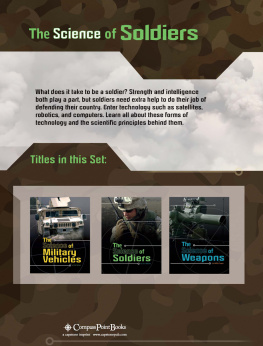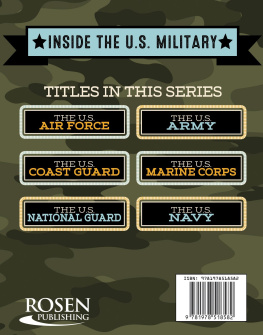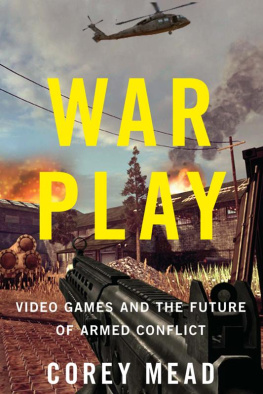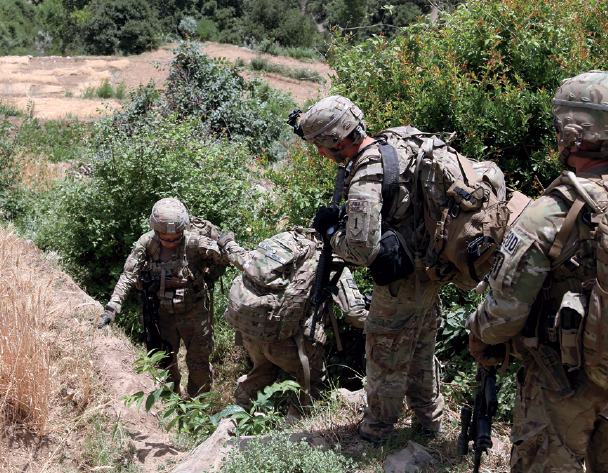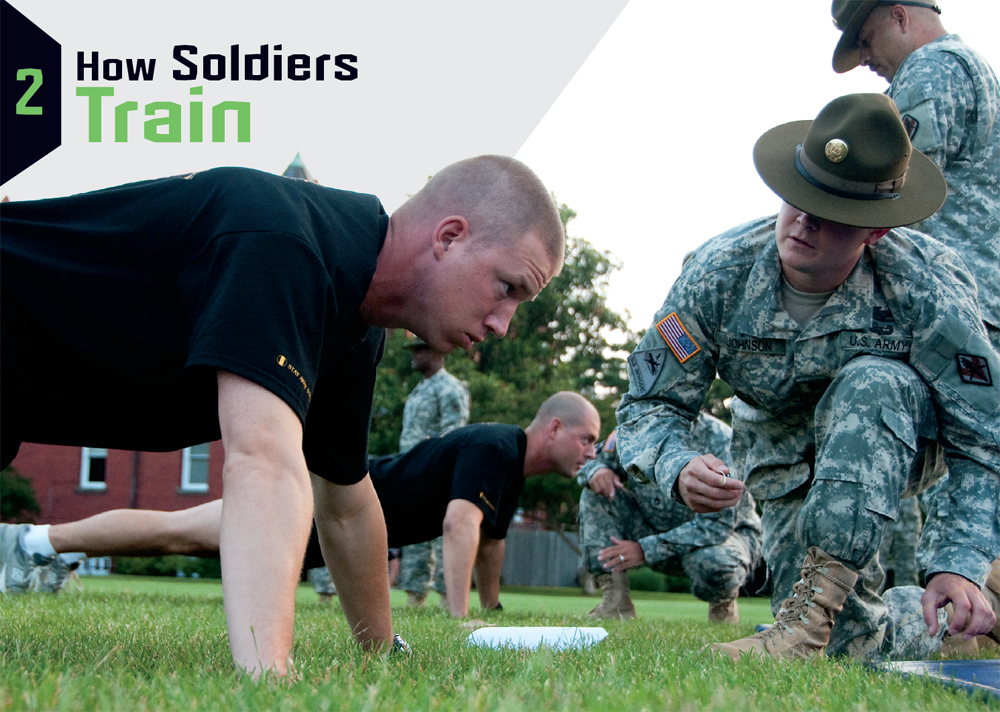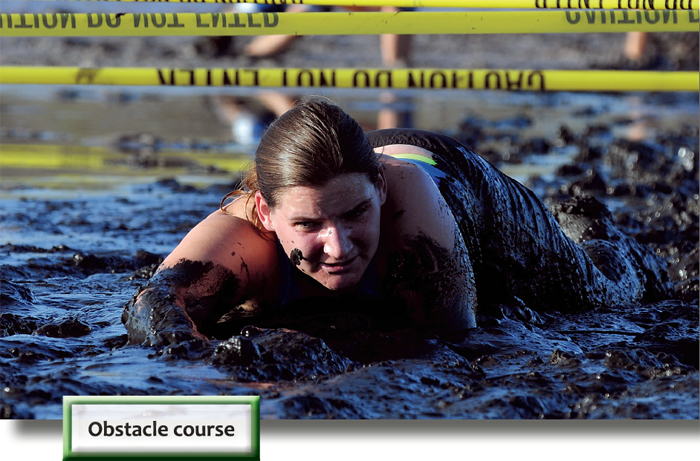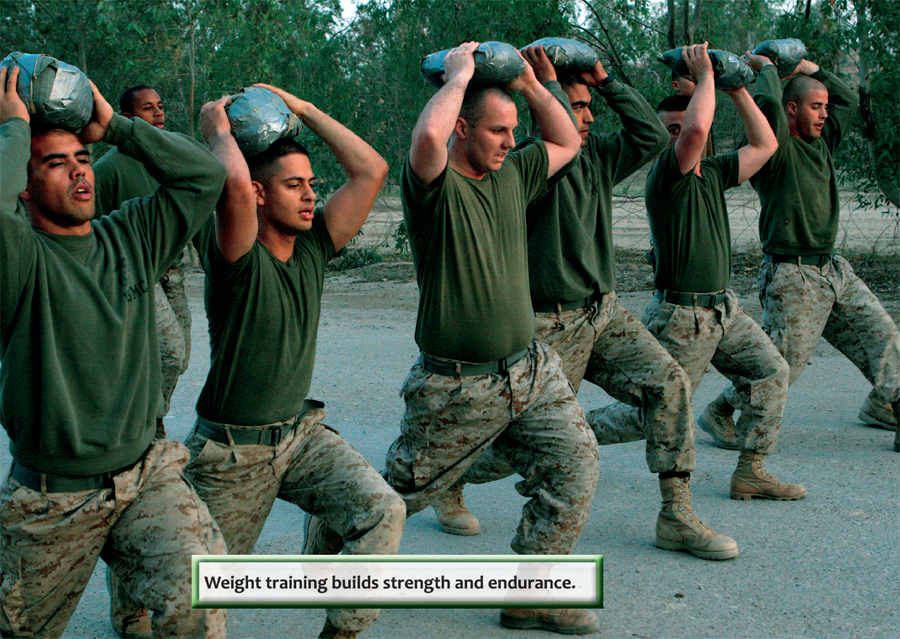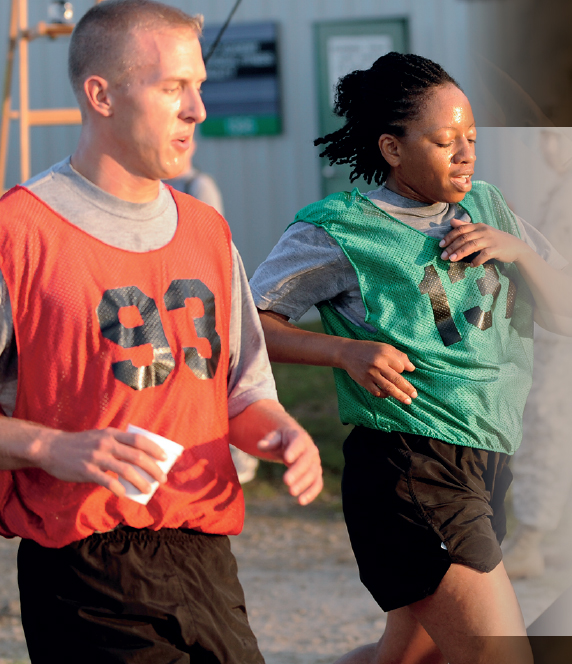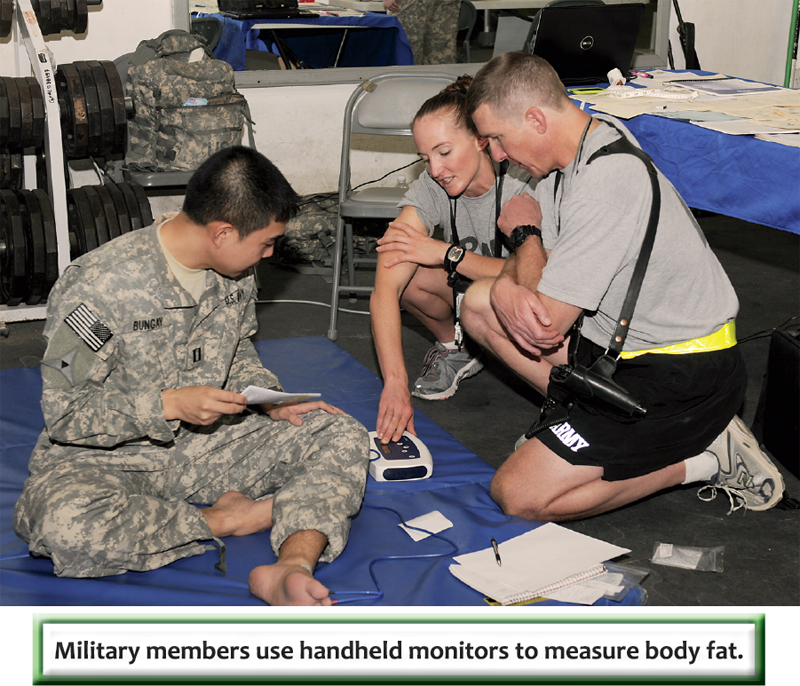Body Armor. 15 Aug. 2011. www.bodyarmornews.com/bodyarmordevelopments/bodyarmor-recent-developments.htm
Fitness and Nutrition. 15 Aug. 2011. www.goarmy.com/content/goarmy/soldier-life/fitness-and-nutrition.html
Halberstadt, Hans. Battle Rattle: The Stuff a Soldier Carries. St. Paul: Zenith Press,2006.
Hendren, John. Medical Treatment Advances Help Injured Soldiers. NPR. 10 May 2006.15 Aug. 2011. www.npr.org/templates/story/story.php?storyId=5395423
Kevlar Brand Aramid Fiber. 15 Aug. 2011. www2.dupont.com/Kevlar/en_US/
Montgomery, Nancy. Building the warrior within: Comprehensive Soldier Fitness programaims to boost soldiers psychological resiliency. Stars and Stripes. 25 Sept. 2010.15 Aug. 2011. www.stripes.com/building-thewarrior-within-comprehensive-soldier-fitness-program-aims-to-boost-soldiers-psychological-resiliency-1.119529
Nusca, Andrew. With new drug, scientists fortify injured soldiers to keep them aliveuntil medical treatment arrives. Smart Plantet. 1 Feb. 2010. 15 Aug. 2011. www.smartplanet.com/business/blog/smart-takes/with-newdrug-scientists-fortify-injured-soldiers-to-keep-them-alive-until-medical-treatment-arrives/3760
Top 5 Gadgets on the High-Tech Soldier. How Stuff Works. 15 Aug. 2011. http://science.howstuffworks.com/5-gadgets-high-tech-soldier2.htm
Vizard, Frank, and Phil Scott. 21st Century Soldier: The Weaponry, Gear, and Technologyin the New Century. New York: Bishop Books, 2002.
I t is a brutally hot day in Afghanistan. A soldier is sweating underneath his thickvestand camouflage helmet. His combat boots are heavy, but they offer his feet supportin the rough terrain.
He and the other soldiers he was traveling with were ambushed. Everyone scattered.He thinks most of his unit made their way out of town and into the hills. But nowhes trapped.
The soldier knows there are enemies lying in wait just around the next wall. Hesheard the machine gun fire, but he isnt sure if they know his position. Hes takencover behind the rubble of a building, trying to decide what to do next.
Slowly he extends his rifle around one corner of the building. A video camera isbuilt into the rifles sight. It focuses on the enemy, zooms in, and gathers imagesfor the soldier. These images appear on a display in the soldiers helmet.
The soldier takes a deep breath and thinks for a moment. He considers how much ammunitionhe has, and he wonders how far away the rest of his unit is.
Next he presses a switch on his rifle, and a laser range finder turns on. It measuresthe distance to his enemy. The range finder relays this information to a data chipinside the rifles high-explosive shell. He sets the round to explode just abovethe enemies heads. He squeezes the trigger. Shrapnel rains down on the enemy group.Then there is silence.
The soldier knows he has given himself a window of opportunity. He races down thestreet and toward the hills, hoping hell regroup with the others from his unit.
Years ago this soldier wouldnt have had much of a chance.
Years ago this soldier wouldnt have had much of a chance. But technology allowedhim to watch his enemy without putting himself in harms way. Silent and unseen,he was able to assess the situation and figure out a plan.
SCIENCE saved
this soldier.


N ot everyone is able to be a soldier. It takes a certain kind of man or woman toputon a uniform and face danger. For this reason soldiers are carefully screenedand thoroughly trained before they go on active duty.
The main branches of the U.S. military are the Army, Navy, Air Force, Marines, andCoast Guard. All of these branches provide critical services in defending the nation.The members of these groups often work together on important missions.
To be combat ready, soldiers have to be physically fit, which involves physiology.They may have to endure scorching days or frigid nights. They might climb mountains,wade through waist-deep water, and carry heavy gear for miles.
When men and women join the military, they go through intensive training periods.
When men and women join the military, they go through intensive training periods,sometimes called boot camp. They do exercises and drills every day to hone theirphysical condition. They work on cardiovascular fitness, which targets their heartrate. Training includes running, biking, and swimming. Soldiers also learn to hikefor miles while wearing heavy backpacks.
New Types of Training
In recent years Army training has evolved to accommodate the kinds of conditionssoldiers might experience in Afghanistan, Iraq, and other countries. Therefore miles-longruns have been replaced by sprints in some training programs.
Soldiers work on strength and endurance. They lift weights and use resistance trainingto increase their muscle strength. They may test themselves by running obstacle courses,including climbing walls, jumping over bodies of water, and crawling through tunnels.Soldiers also need to be flexible. They stretch their muscles after exercise so theyremain limber. Being flexible can help a soldier climb a mountain faster or parachutemore effectively from a plane.
The Physiology of AEROBIC FITNESS
Most people know that aerobic exercise is good for the heart, but there is more toit. Aerobic activity uses oxygen to provide energy for all the bodys muscles. Soldierswho train aerobically experience the following:
- More air moves through the lungs
- Oxygen moves from the lungs and into the bloodstream.
- As the heart pumps faster, more oxygen-rich blood is delivered to the muscles.
- The blood vessels change size to move blood away from inactive muscles and towardactive ones.
Maintaining a Healthy Weight
Most military groups require soldiers to meet specific body composition standards.This means they have a healthy weight based on their height. Body mass index (BMI)is a number that calculates body fat, based on height and weight. In general, a normalBMI is between 18.5 and 24.9, but some professional athletes can be healthy and havea higher BMI. Most military groups require that soldiers have a BMI of 27.5 or lower.It is important that they dont have extra pounds to slow them down when they arein combat. Also, extra weight can lead to a higher risk of injury or disease.

